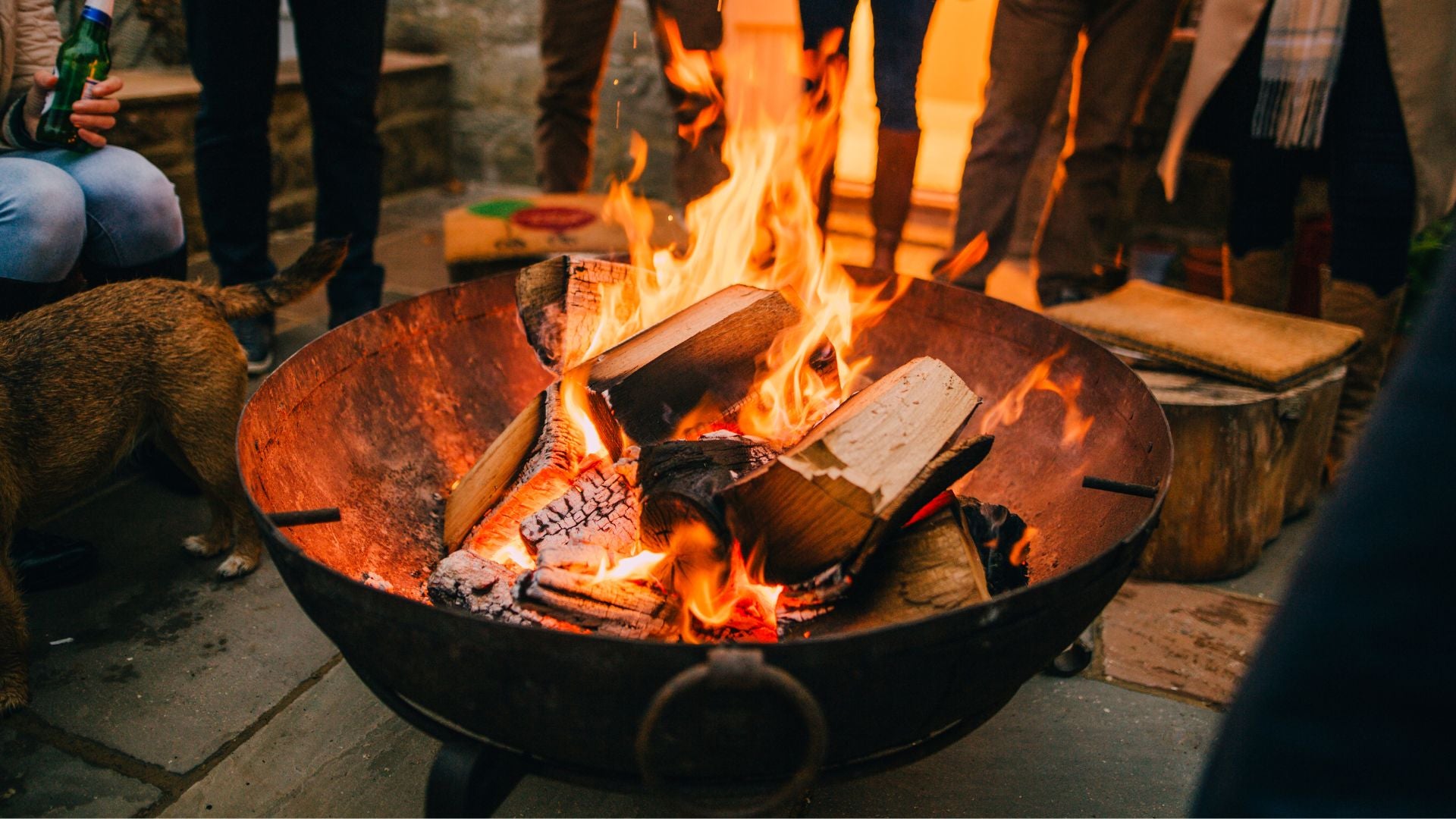The allure of a crackling fire under the open sky has made the fire pit an enviable addition to any outdoor space. Whether it's a portable fire pit for those seeking flexibility or a permanent fire pit that stands as a testament to timeless gatherings, the warmth of a backyard fire pit extends beyond the physical. It's a hub for storytelling, a haven for starlit conversations, and a DIY fire pit project that embodies the spirit of outdoor living.
However, the charm of fire pits comes with a responsibility to maintain a safe fire pit environment. Building a fire pit requires careful consideration to prevent the unpredictable nature of fire from becoming a hazard. A sturdy fire ring, appropriate materials such as lava or river rocks, and respect for proximity to gas lines and flammable structures are foundational to fire pit safety.
Neglecting even a single safety measure, like leaving a fire unattended or skimping on a reliable fire extinguisher, could cause embers to catch fire in places they shouldn't. For instance, the inner wall of a fire pit must be constructed with non-combustible materials to ensure that the joy of a glowing flame remains a pleasure, not a threat.
In crafting the quintessential outdoor gathering spot, balancing the enjoyment of building a fire pit with adherence to safety protocols is essential. This guide will light the way to achieving that balance, ensuring that every fire kindled in your home is both a delight to the senses and a testament to mindful preparation.
Fire Pit Safety Essentials
Creating a fire pit as a great focal point for your backyard requires more than aesthetics; it's a commitment to safety and responsibility. To ensure that your next fire is both enjoyable and secure, here are essential safety tips to keep in mind.
1. Understand Local Laws: Before striking a match, become familiar with local laws regarding open fires. These regulations are in place to protect you and the environment from the unintended consequences of fires.
2. Choose the Right Location: Select an open area in your yard away from overhanging branches, fences, and all flammable materials. The ground should be level to prevent flames from escaping and potentially causing a hazard.

3. Prepare the Base: A solid foundation is vital for fire safety. Construct the base with non-flammable materials such as sand or bricks, which can withstand heat and provide a barrier between the fire and the ground.
4. Use a Steel Ring: A steel ring within the fire pit can contain the burning materials and reduce the risk of the fire spreading. It also protects the bricks or stones from intense heat, prolonging their integrity.
5. Opt for Safe Materials: Decorative stones can enhance a fire pit's appearance, but ensure they are suited for high temperatures to prevent cracking. Avoid using flammable liquids like lighter fluid to ignite or sustain the fire, as they can lead to uncontrollable flames.
6. Keep Water Nearby: Always have a bucket of water or a garden hose within reach. If the flames escape the fire pit, you need to be able to douse them quickly to prevent spreading.
7. Avoid Toxic Smoke: Burn only untreated, dry wood to minimise the emission of toxic smoke. The burning of inappropriate materials not only affects air quality but can also be hazardous to health.
8. Protect Your Yard: To protect the surrounding yard, maintain a safe distance from grass and other greenery that may easily catch fire. Be mindful of the direction of the wind, as it can carry sparks and embers to nearby flammable materials.
 9. Supervision is Key: Never leave the fire unattended. An adult should always be present to monitor the flames and ensure that burning is controlled.
9. Supervision is Key: Never leave the fire unattended. An adult should always be present to monitor the flames and ensure that burning is controlled.
10. Extinguish Properly: When it's time to extinguish the fire, do so thoroughly. Drown all embers, not just the red ones, with water, then stir the ashes to ensure no burning embers remain.
By adhering to these safety essentials, you can enjoy the warmth and ambience of your backyard fire pit with peace of mind, knowing that you've taken the right steps to spend time safely around your backyard flames.
Outdoor Fire Regulations in Australia
In Australia, outdoor fire regulations are stringent, particularly when it comes to the use of a fire pit in your backyard or garden. Whether you're looking to enjoy the warmth of a crackling fire on a chilly evening or simply want to gather friends and family for a fireside chat, it's important to understand and adhere to these rules to ensure the safety of your house and surroundings.
Choosing the right location for your pit is critical. It should be situated well away from your house and any other structures to minimise the risk of fire spread due to heat or stray sparks. It's also wise to keep a close eye on children near the fire to prevent accidents. The materials you choose for constructing your pit are equally crucial. Non-flammable options like stone or concrete are recommended as they help contain the fire and provide a stable base, reducing the likelihood of stray sparks igniting nearby grass or other flammable materials.

Moreover, incorporating rocks into the design of your pit can enhance safety by creating an additional barrier against sparks. However, it's essential to use suitable rocks as some types can fracture or explode when heated. The pit should be encircled with a wide berth of non-combustible materials, free from grass and other vegetation, to prevent the accidental fire spread.
Regular maintenance of your fire pit is necessary, too, not just for the longevity of the pit but for reducing fire hazards. Keeping the pit clean of ash and debris ensures that heat is contained effectively and the risks of flying sparks are minimised.
Australian regulations often specify a maximum size for residential fire pits, typically around 45–55 centimetres in height, which helps manage and control the fire. Local guidelines might vary, so it's essential to check the specific regulations in your area before installation.
Remember, the joy of a fire pit comes with the responsibility of managing it safely. Always keep a close eye on the fire, especially in the presence of children, and ensure that your pit’s location, materials, and maintenance align with your state’s outdoor fire regulations.
Choosing the Perfect Spot
Selecting the perfect location for your fire pit is an important aspect of enhancing your outdoor living experience, striking a delicate balance between beauty, functionality, and safety. The ideal spot should distribute heat and light effectively, creating a cozy atmosphere without risk to nearby structures or vegetation. It's essential to set it at a prudent distance from property lines or the deck to ensure safety and respect for neighbourly boundaries and to mitigate any issues with smoke or light affecting those next door. Consider the health of your plants and pets when choosing the right spot.
When preparing the site for your fire pit, consider the initial and ongoing costs. This includes any groundwork needed to establish a flat surface, which is imperative for the stability of the fire pit and to prevent the spread of fire due to uneven terrain. The fire pit should complement your garden's aesthetic with a thoughtful placement that enhances the overall design and lighting effects while also facilitating the arrangement of seating for gathering around the fire.
Accessibility to materials required to manage and extinguish the fire is another critical consideration. Position your fire pit within reach of extinguishing agents, ensuring quick and efficient response in an emergency. Additionally, think about the logistics of fueling the fire; wood should be stored conveniently close to the pit but at a safe distance to avoid accidental ignition.

By thoughtfully considering these elements, the spot you choose for your fire pit will be visually appealing and contribute to the safe and enjoyable ambience of your garden, promising countless pleasant evenings spent under the stars.
Ensuring Safety and Enjoyment: The Key to Responsible Fire Pit Ownership
Being well-prepared for emergencies is not only a responsibility to oneself but also to one's community. Being ready can significantly reduce the risks and impacts associated with unexpected events. It is a continuous process that requires regular review and updating to adapt to new challenges and information.
Visit our shop to find your next firepit, and make your garden the ultimate spot for winter.

